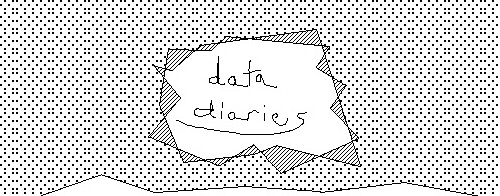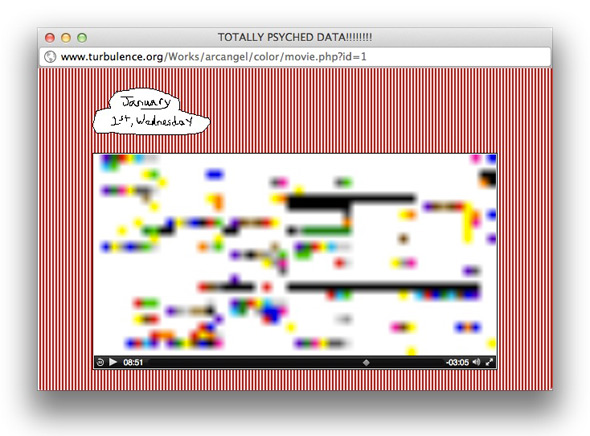Today is the first official Digital Archives Day. All day, archivists and conservators working in digital archives of all kinds will be sharing their work under the #DigitalArchivesDay hashtag, and blogging at dayofdigitalarchives.blogspot.com

I wanted to take a moment today to briefly talk about an innovation in digital imaging and computing that has become a frustation to many artists that have been experimenting with the web since the early years: Anti-aliasing. Put simply, anti-aliasing is a method of image processing that uses interpolation, to construct "new data points within the range of a discrete set of known data points." This is a function of digital signal processing that has many many important applications, from helping typefaces look good on screen, to making images not look odd when scaled down. The use of anti-aliasing that we are talking about here though, is quite specific: the display of resized digital images and video in web browsers. To illustrate how anti-aliasing has affected an era of web content, we will look at Cory Arcangel's "Data Diaries."

Data Diaries on Turbulence.org
In 2002, when Arcangel created "Data Diaries," if one were set the size of an image or video embedded in a web page larger than it's actual size, the browser would use nearest neighbor interpolation to display the image. In other words – if one were to embed a 50 x 50 px image or video as 100 x 100 px, each pixel would appear to double in size. This default form of nearest neighbor interpolation was exploited to aesthetic ends by many early net artists, including Cory. When Cory made Data Diaries, he rendered the original videos at the dimension of 50 x 25 px - so tiny! He embedded these videos at dimensions of 500 x 266 px using the default/inherent nearest neighbor interpolation to produce the blocky pixelated color streams.
Since 2002, browsers have adopted newer interpolation strategies (either bilinear, or bicubic) for scaling digital images and video. This form of interpolation attempts to smooth or average pixels, rather than simply appearing to enlarge them.

Above-top: Arcangel's video as it is currently affected by anti-aliasing; Above-bottom: video rendered at 500px with nearest neighbor interpolation
This case is a clear example of how the strategically unconventional technical practices of artists can create situations where their work is entirely subverted by something that is far beyond their control. I have created renders of Cory's videos that are exactly 500 x 266 px scaled using video software that allows for nearest neighbor interpolation. Embedding these videos in place of the originals allows for the work to be seen as it originally appeared in 2002. While this is a practical means to aesthetic ends, the elegance of exploiting the inherent quality of a piece software is eliminated. Short of developing an alternative browser that uses nearest neighbor interpolation, it is questionable if this original underlying strategy could be maintained.